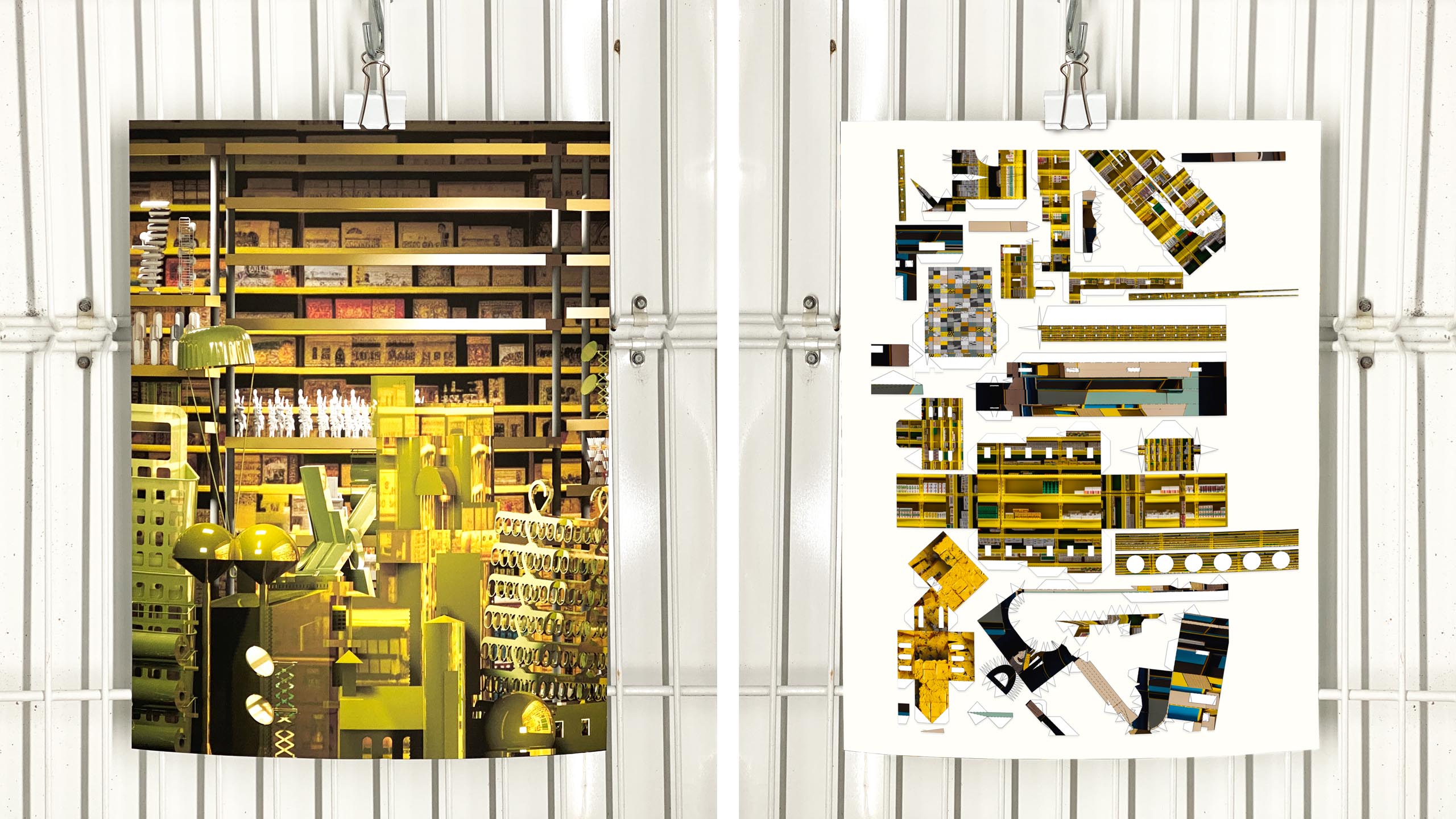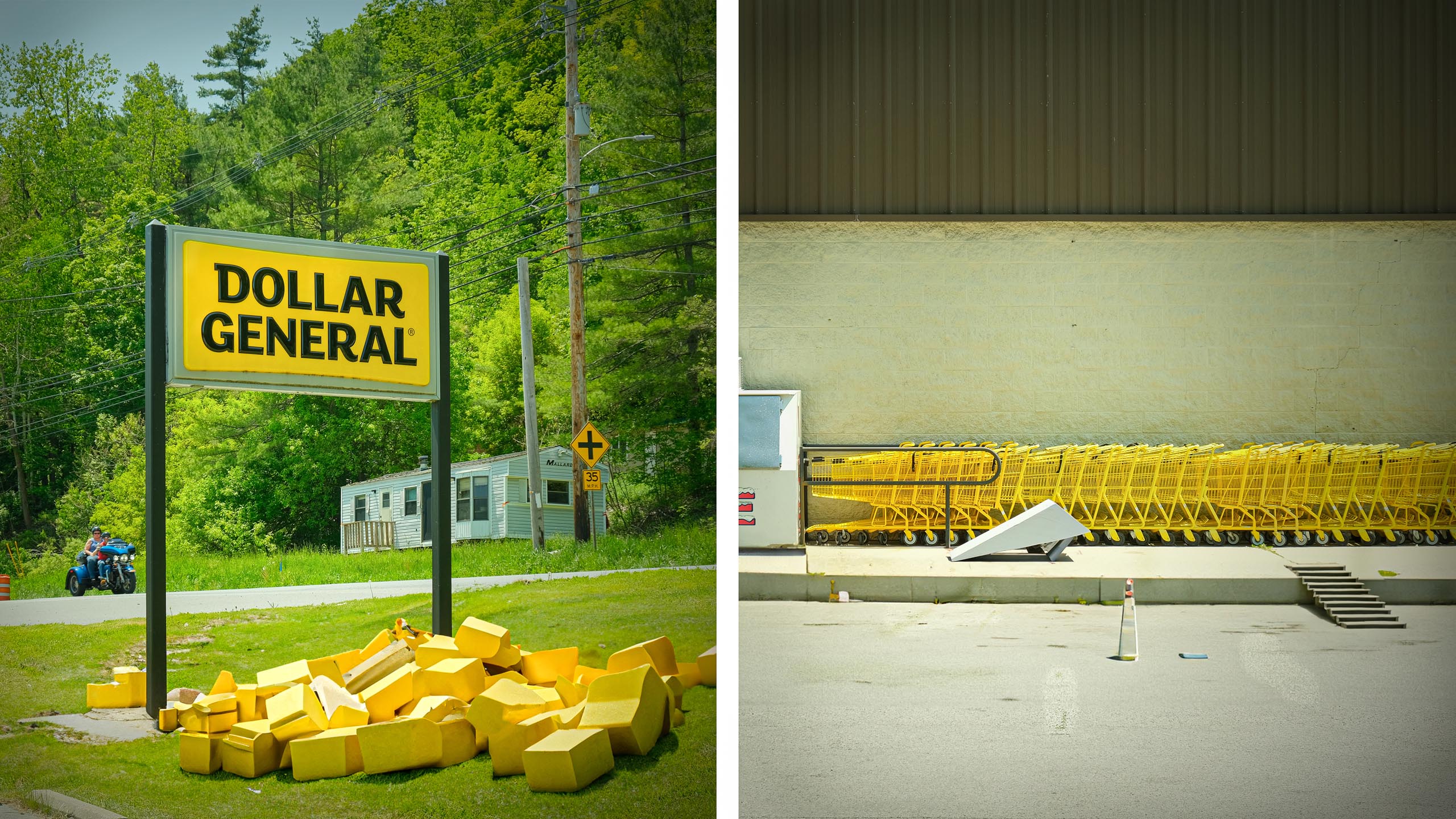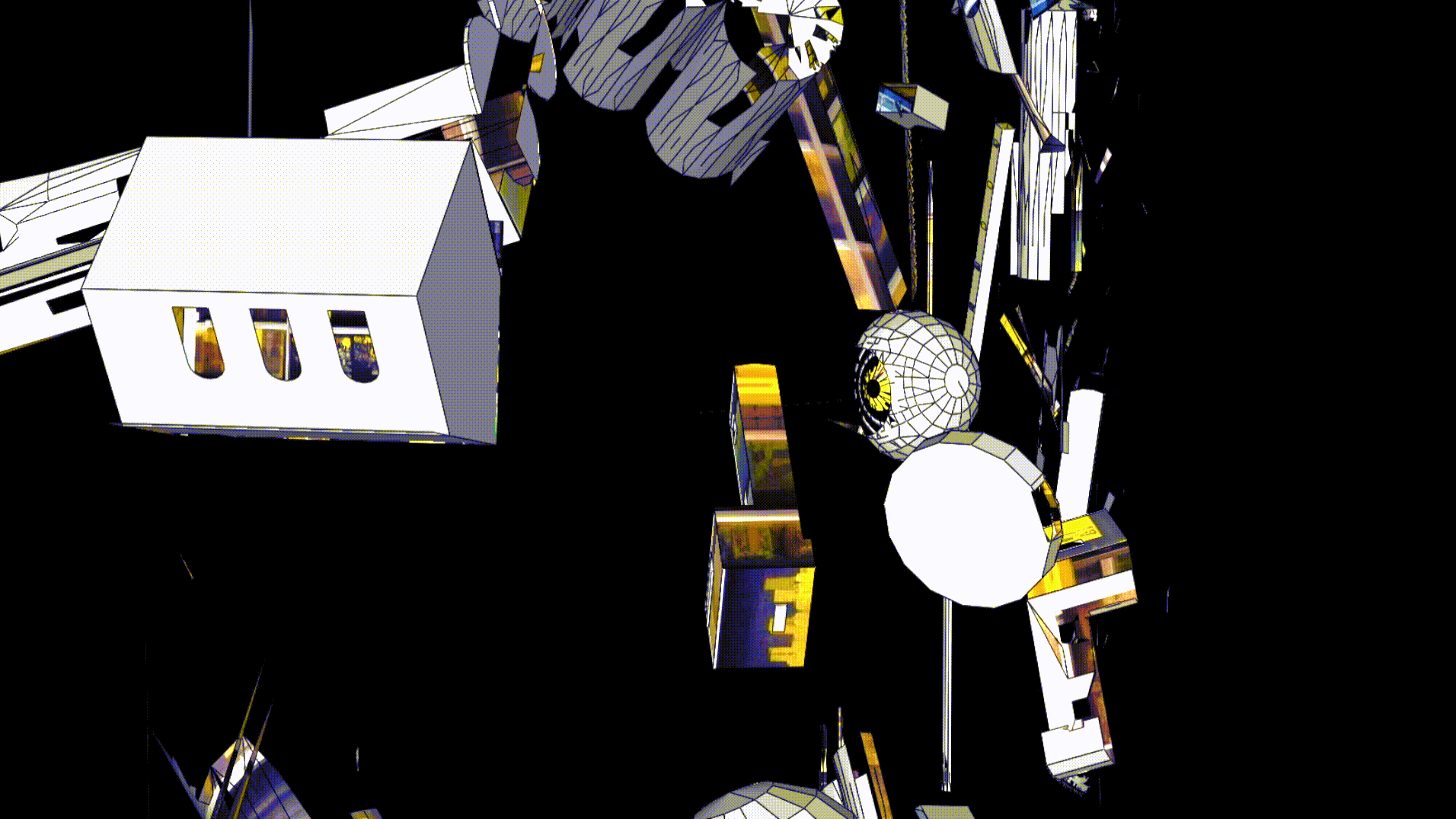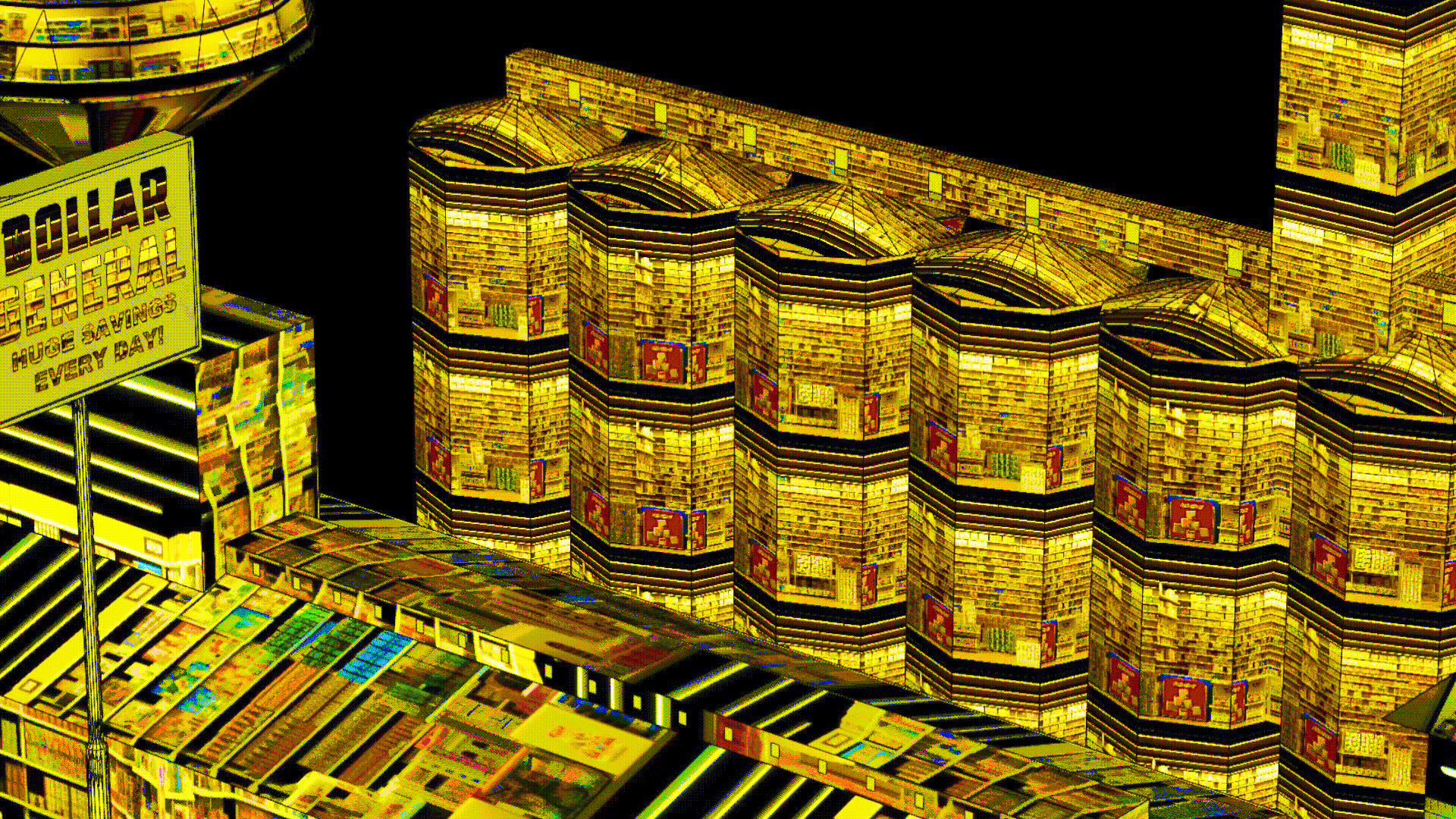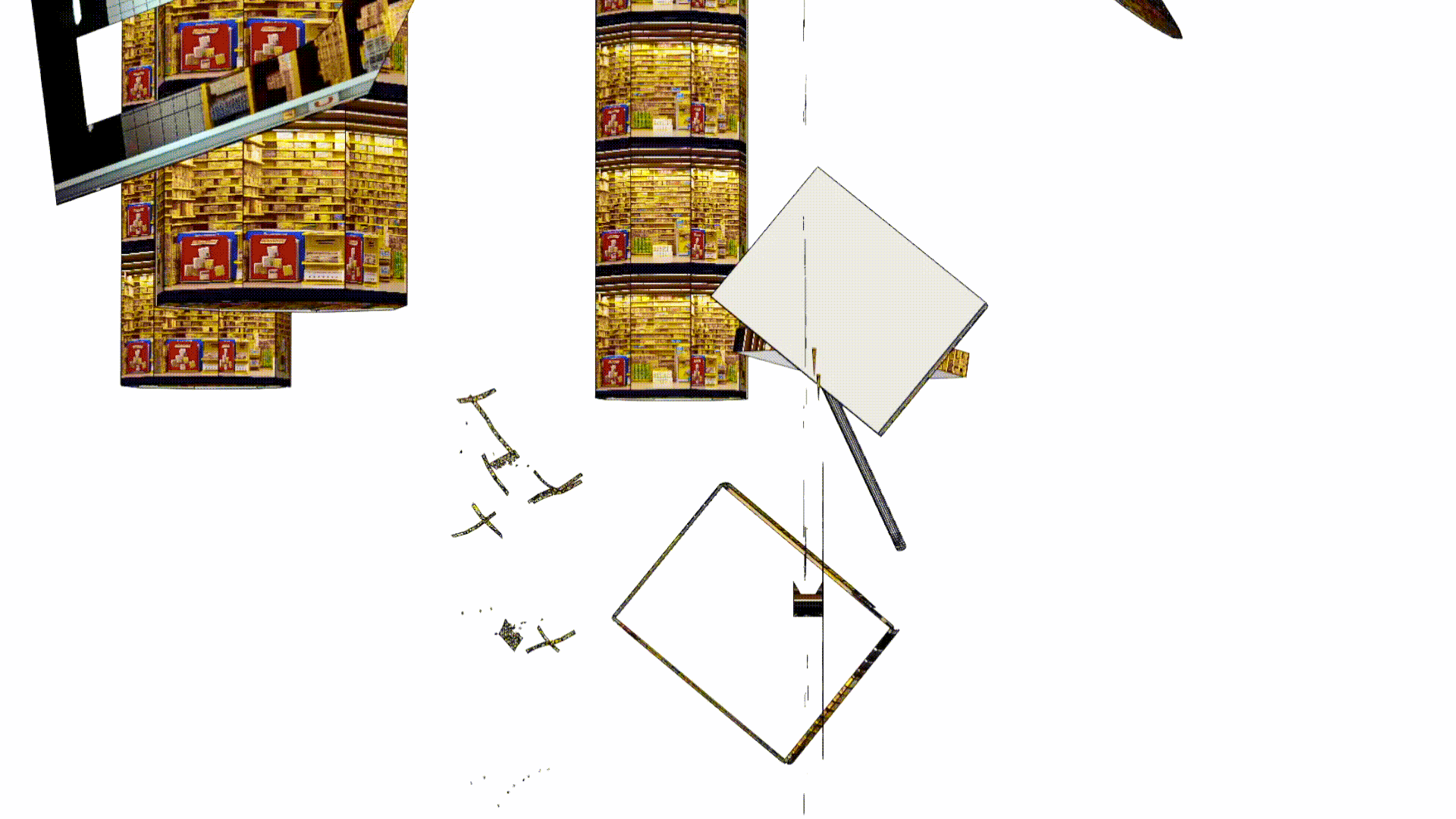Sarah Aziz and Lindsey Krug: Doll(ar)house Dreams
One of six installations for the digital exhibition by winners of the 2023 League Prize.
“No matter how bad it gets, I’m always rich at the dollar store.” —Pinterest proverb
Doll(ar)house Dreams builds on the dissonant legacies of paper architecture—embracing both the pejorative and the visionary—by creating a series of cut-and-fold speculative structures inspired by the American landscape and its most ubiquitous landmark: Dollar General. As America’s largest dollar store empire, Dollar General Corporation ballooned from 8,300 brick-and-mortar stores in 2008 to over 19,100 in 20231P. Smith, “Dollar General: Number of Stores U.S. 2018 | Statista,” Statista, May 3, 2023. view online.. Few building types or cultural amenities have spread with such pace and zeal to reach every kind of consumer: haves and have-nots, urbanites and ruralites, us and them. For better or for worse, the dollar store and its small-box shell are everywhere and for everyone.
The project studies the dollar store phenomenon across the “flyover states” of the American Midwest, which have long served as an essential but under-recognized infrastructure for a coastal architectural discipline. Like the dollar store, these areas are often rendered invisible or reductively monolithic rather than nuanced and extra-ordinary. How might the perception, function, and influence of Dollar General change when it moves into some of the Midwest’s most mundane yet iconic architectures, such as the Foxconn dome, the US’s first mosque, a Tempur-Sealy mattress factory, New Deal public school buildings, grain silos, or the Grand Castle Apartments?
Through a collection of surrealist scenes, Doll(ar)house Dreams walks the wobbly line between artificiality and reality and asks viewers to confront their architectural biases and discomforts as the copy-paste language of the dollar store is put in dialogue with venerated building types. Retail still-lifes are photographed and spliced with their virtual clones along with AI-generated patterns and artifacts, producing uncanny, uncomfortable, and unimaginable scenes born of the humble dollar store.

Doll(ar)house Dreams, installation in the Swing Space at MASS MoCA, made while in residence at The Studios at MASS MoCA, May 2023.

Doll(ar)house Dreams, installation in the Swing Space at MASS MoCA, made while in residence at The Studios at MASS MoCA, May 2023.
Project credits
Project team Sarah Aziz and Lindsey Krug


